In this article, I am going to discuss the ASP.NET Core InProcess Hosting in detail. Please read our previous article before proceeding to this article where we discussed the ASP.NET Core Main method in detail. As part of this article, we are going to discuss the following pointers in detail.
When we execute an ASP.NET core application then the .NET runtime looks for the Main() method. The Main() method is the entry point for the .net core application to execute.
As you can see from the above image the Main() method of the Program class calls the static CreateWebHostBuilder() method. Then the CreateWebHostBuilder() method calls the static CreateDefaultBuilder() method of the WebHost class. The CreateDefaultBuilder() method sets the web host which will host our application with default preconfigured configurations.
What are the Tasks performed by CreateDefaultBuilder() method?
As part of setting the web host, the CreateDefaultBuilder() method does several things. Some of them are as follows
Here in this article, we are going to discuss InProcess hosting and in a later article, we will discuss the OutOfProcess hosting.
How to Configure InProcess hosting in ASP.NET Core?
To configure the InProcess hosting for ASP.NET Core Web application there is only one simple setting, just add the element to the application project file with a value of InProcess as shown in the below image. To find the application project file, just right click on your application from the solution explorer and click on the “edit yourapplication.csproj” option.
When we create a new ASP.NET Core Web application by using any template, by default the project file is created with InProcess hosting which is used for hosting the application in IIS or IIS Express scenarios.
In case of InProcess hosting (i.e. when the CreateDefaultBuilder() sees the value as InProcess for the AspNetCoreHostingModel element in the project file), behind the scene the CreateDefaultBuilder() method internally calls the UseIIS() method. Then host the application inside the IIS worker process (i.e. w3wp.exe for IIS and iisexpress.exe for IISExpress).
From the performance point of view, the InProcess hosting model delivers significantly higher request throughput than the OutOfProcess hosting model. Why we will discuss this at the end of this article.
The process name that will be used to execute the application is w3wp in the case of IIS. Similarly, if it is IIS Express then the process name will be iisexpress.
Let’s Confirm this:
Now if you will run the application, then you see the following hello world message in the browser.
You are getting the above message from the following Startup class
To display the process name in the browser you need to use the System.Diagnostics.Process.GetCurrentProcess().ProcessName within the Startup as shown below.
Now when we run the application from visual studio it displays the message in the browser as shown below.
This is because by default the Visual Studio uses IISExpress when we run an application as shown in the below image.
The IIS Express is a lightweight, self-contained version of IIS. It is optimized for web application development. The most important point is that we use it only in development, not for production. In production we generally use IIS. In a later article, we will discuss how to deploy an ASP.NET Core application on IIS.
The OutOfProcess hosting
In the case of OutOfProcess hosting, there are 2 web servers
With the InProcess hosting model, there is only one web server i.e. the IIS. So, in the case of the InProcess hosting model, we do not have the performance penalty for navigating the requests between the internal and external web servers. This is the reason why the InProcess hosting model delivers significantly higher request throughput than the OutOfProcess hosting model.
In the next article, we will discuss the Kestrel Web Server in ASP.NET Core application in detail. Here, in this article, I try to explain the ASP.NET Core InProcess Hosting in detail. I hope this article will help you to understand the ASP.NET Core InProcess Hosting.
Summary:
I hope this post will be helpful to understand the concept of the ASP.NET Core InProcess Hosting
Please share this post with your friends and colleagues.
For any queries please post a comment below.
Happy Coding 😉
- What are the Tasks performed by CreateDefaultBuilder() method?
- What is InProcess hosting in ASP.NET Core?
- How to host ASP.NET Core Application using InProcess hosting Model?
- How does the InProcess hosting work in ASP.NET Core?
When we execute an ASP.NET core application then the .NET runtime looks for the Main() method. The Main() method is the entry point for the .net core application to execute.
As you can see from the above image the Main() method of the Program class calls the static CreateWebHostBuilder() method. Then the CreateWebHostBuilder() method calls the static CreateDefaultBuilder() method of the WebHost class. The CreateDefaultBuilder() method sets the web host which will host our application with default preconfigured configurations.
What are the Tasks performed by CreateDefaultBuilder() method?
As part of setting the web host, the CreateDefaultBuilder() method does several things. Some of them are as follows
- Setting up the webserver (will discuss in this article)
- Loading the host and application configuration from various configuration sources (will discuss in our upcoming articles)
- Configuring logging (will discuss in our upcoming articles)
Here in this article, we are going to discuss InProcess hosting and in a later article, we will discuss the OutOfProcess hosting.
How to Configure InProcess hosting in ASP.NET Core?
To configure the InProcess hosting for ASP.NET Core Web application there is only one simple setting, just add the element to the application project file with a value of InProcess as shown in the below image. To find the application project file, just right click on your application from the solution explorer and click on the “edit yourapplication.csproj” option.
When we create a new ASP.NET Core Web application by using any template, by default the project file is created with InProcess hosting which is used for hosting the application in IIS or IIS Express scenarios.
In case of InProcess hosting (i.e. when the CreateDefaultBuilder() sees the value as InProcess for the AspNetCoreHostingModel element in the project file), behind the scene the CreateDefaultBuilder() method internally calls the UseIIS() method. Then host the application inside the IIS worker process (i.e. w3wp.exe for IIS and iisexpress.exe for IISExpress).
From the performance point of view, the InProcess hosting model delivers significantly higher request throughput than the OutOfProcess hosting model. Why we will discuss this at the end of this article.
The process name that will be used to execute the application is w3wp in the case of IIS. Similarly, if it is IIS Express then the process name will be iisexpress.
Let’s Confirm this:
Now if you will run the application, then you see the following hello world message in the browser.
You are getting the above message from the following Startup class
To display the process name in the browser you need to use the System.Diagnostics.Process.GetCurrentProcess().ProcessName within the Startup as shown below.
Now when we run the application from visual studio it displays the message in the browser as shown below.
This is because by default the Visual Studio uses IISExpress when we run an application as shown in the below image.
The IIS Express is a lightweight, self-contained version of IIS. It is optimized for web application development. The most important point is that we use it only in development, not for production. In production we generally use IIS. In a later article, we will discuss how to deploy an ASP.NET Core application on IIS.
The OutOfProcess hosting
In the case of OutOfProcess hosting, there are 2 web servers
- An internal web server and
- One external web server.
With the InProcess hosting model, there is only one web server i.e. the IIS. So, in the case of the InProcess hosting model, we do not have the performance penalty for navigating the requests between the internal and external web servers. This is the reason why the InProcess hosting model delivers significantly higher request throughput than the OutOfProcess hosting model.
In the next article, we will discuss the Kestrel Web Server in ASP.NET Core application in detail. Here, in this article, I try to explain the ASP.NET Core InProcess Hosting in detail. I hope this article will help you to understand the ASP.NET Core InProcess Hosting.
Summary:
I hope this post will be helpful to understand the concept of the ASP.NET Core InProcess Hosting
Please share this post with your friends and colleagues.
For any queries please post a comment below.
Happy Coding 😉


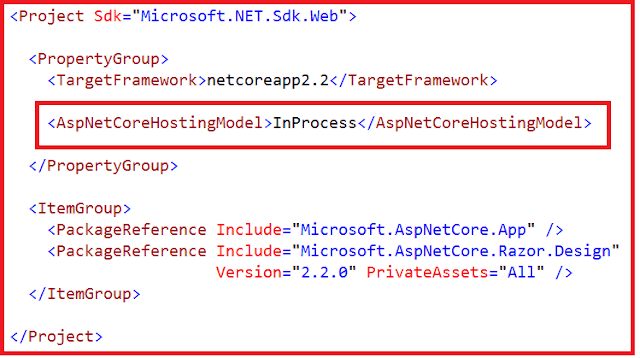
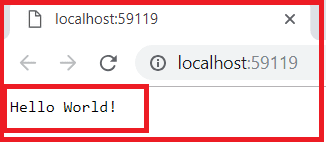
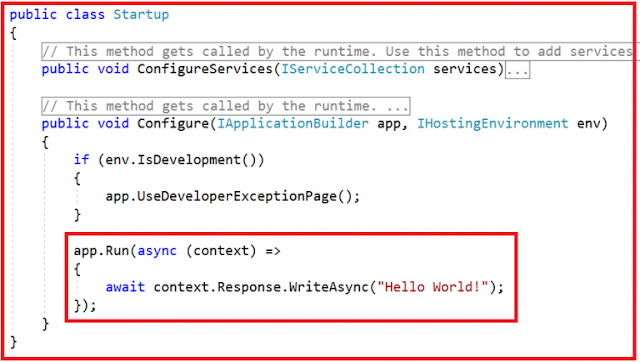
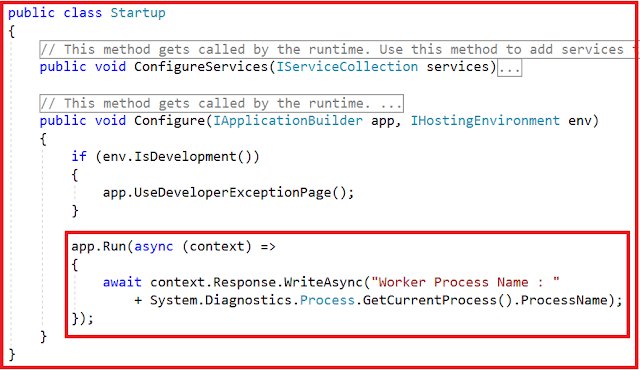


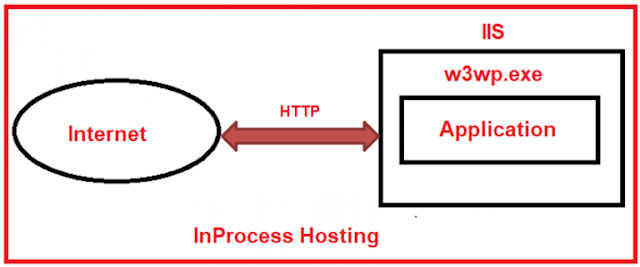

0 comments:
Post a Comment
If you like this website, please share with your friends on Facebook, Twitter, LinkedIn.